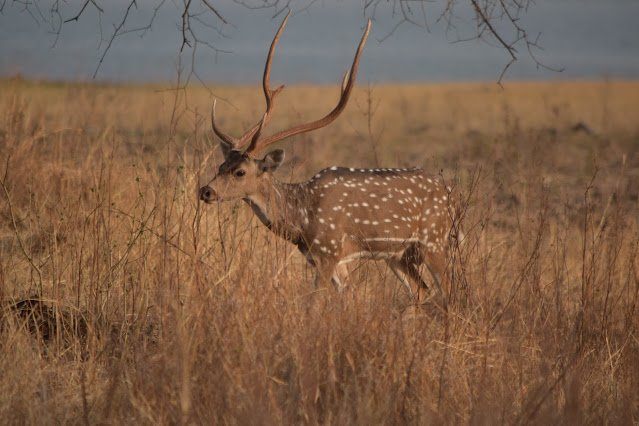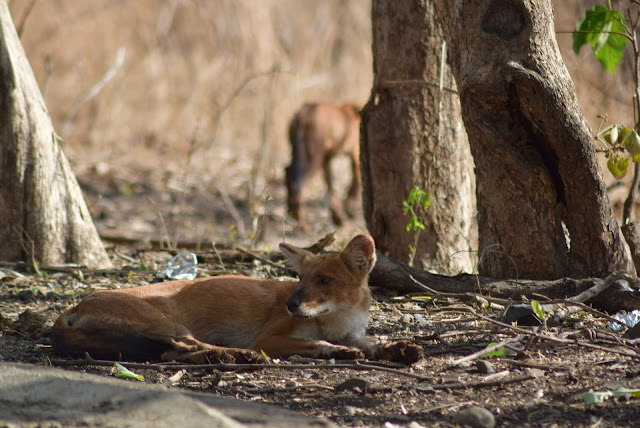Online Safari Booking Bor with Best Bor Package
Bor Wildlife Sanctuary is a natural life safe-haven situated close to Hingi in Wardha District in the Indian province of Maharashtra. It is a home to an assortment of wild creatures. The asylum covers an area of 61.1 km2 (23.6 sq mi). which incorporates the waste bowl of the Bor Dam. It is outstanding that Bor Sanctuary and a few nearby safeguarded regions will be converged with Pench Tiger Reserve (Maharashtra) as a 'Satellite center region', to over two times the region of that grounded tiger save.
Bor Sanctuary is halfway situated among a few other Bengal Tiger territories including: Pench Tiger Reserve Maharashtra), 90 km2 (35 sq mi) toward the upper east; Nagzira Wildlife Sanctuary, 125 km2 (48 sq mi) toward the east upper east; Umred Karhandla Wildlife Sanctuary (Pro),75 km2 (29 sq mi) toward the east southeast; Tadoba - Andhari Tiger Reserve, 85 km2 (33 sq mi) toward the southeast; Melghat Tiger Reserve, 140 km2 (54 sq mi) toward the west northwest and Satpura National Park and Tiger Reserve,160 km2 (62 sq mi) toward the northwest.
The Core Zone of 55.92 km2 (21.59 sq mi) is the most safeguarded and intact piece of the safe-haven where people in general isn't permitted. It includes 91.48% of the all out region. A large portion of the center region is adjacent with great woodland of Wardha Forest Division and Nagpur Forest Division. See Map of Bor Wildlife Sanctuary.
The Eco-the travel industry Zone of 5.21 km2 (2.01 sq mi) assigned for free for nature and untamed life the travel industry contains 8.52% of the absolute asylum region . The design is to teach people in general with regards to the meaning of nature and untamed life preservation and to invigorate ecological mindfulness.
The Buffer Zone is the less safeguarded woods region close to the Sanctuary that has been proposed as a defensive hindrance for the center region. The Bor Sanctuary is actually separated by the Bor Reservoir into 2 segments, specifically; 2/3 (40 km2 (15 sq mi)), as the west part and 1/3, (21 km2 (8.1 sq mi)), as the eastern part. 95% of the western part is in Wardha region and 90% of the eastern part is in Nagpur region. The Bor Reservoir region is around 7.25 km2 (2.80 sq mi) and is excluded from the complete safe-haven region
The yearly births of new tiger fledglings shows that the Bor is a favorable place for tigers, with whelps brought into the world here every one of the beyond four years. In 2008, a tigress had three offspring, then, at that point, another tigress had two fledglings in 2009, trailed by one more tigress with one whelp in 2010 and three whelps in 2011.
The field overseer of Pench Tiger Reserve said the 2011 birthsseem to be the main litter of this tigress.
"It isn't functional to announce Bor a hold. It is all around associated with Pench Tiger Reserve and untamed life safe-haven abutting Pench, and is additionally a natural life passage. This region will currently be important for Pench," said S.K. Khetarpal, Principal Chief Conservator of Forests ( PCCF) for Wildlife, Maharashtra.
Bor asylum will presently be reached out to 120.39 km2 (46.48 sq mi). It will incorporate the current safe-haven area of 59.70 km2 (23.05 sq mi) and abutting 12.24 km2 (4.73 sq mi) from Nagpur and 48.46 km2 (18.71 sq mi) from Wardha division. The extended 120.39 km2 (46.48 sq mi) Bor will be a 'satellite' center of the 257.23 km2 (99.32 sq mi) Pench alongside 172.86 km2 (66.74 sq mi) Mansingdeo safe-haven. On the off chance that these three regions are completely merged, Pench will become 550.47 km2 (212.54 sq mi), a 2.14 times expansion in region.
For booking on the online Jungle Safari in Bor, Maharashtra Nature's fledgling guarantees the Bor safari booking and Luxury accommodation in BOR Tiger Reserve.
The Bor asylum is a significant satellite region which can possibly fill in as a venturing stone for tigers scattering from the source area of Pench.
For best Bor Package Contact below
Call: +91 9766983240
Mail : enquiry.ns.new@gmail.com



Comments
Post a Comment